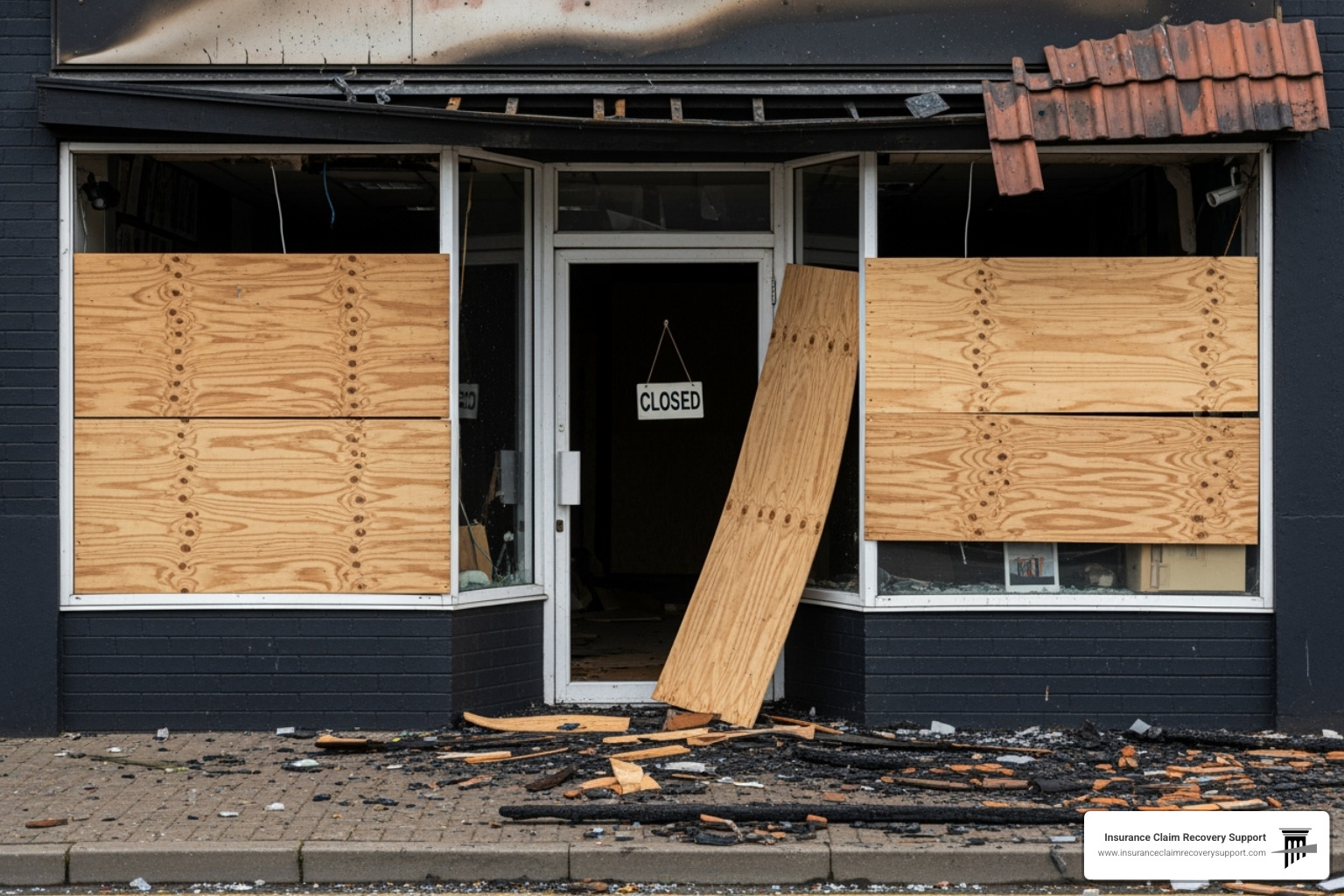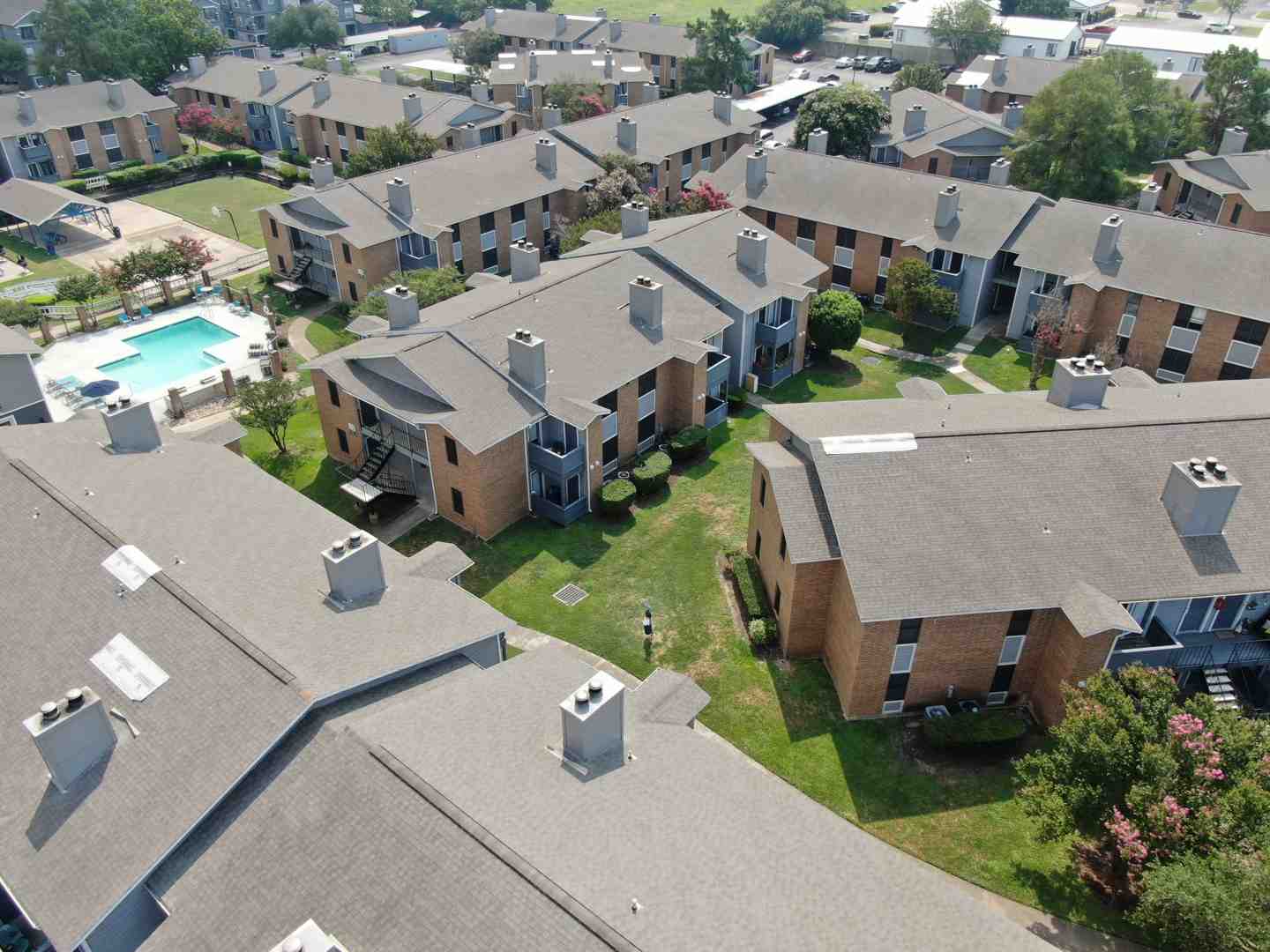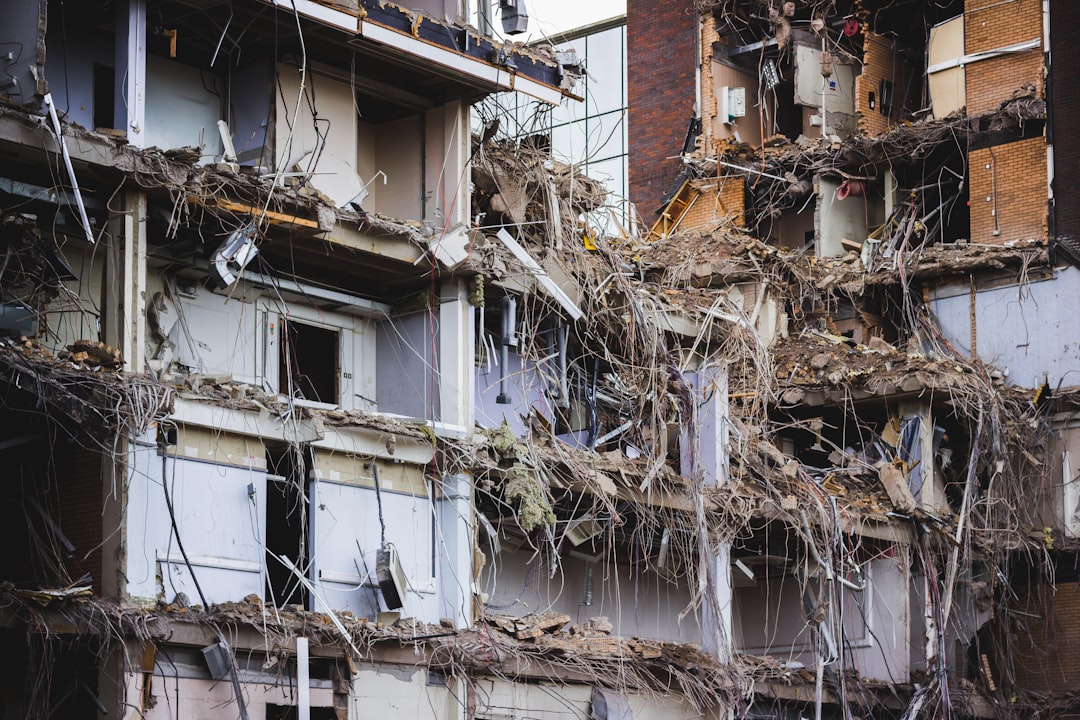Assessing damage to your property after a hurricane is a critical step toward recovery. When the storm subsides, it’s crucial to understand the full extent of the destruction to prioritize safety and begin the restoration process. Here’s how:
- Ensure Safety: Check for immediate dangers like electrical hazards or structural damage.
- Visual Inspection: Look for obvious damages like roof leaks, broken windows, or water intrusion both inside and outside.
- Document Everything: Photograph or video record all visible damage, inside and out.
- Contact Professionals: Reach out to experts for thorough assessments and repairs.
- File Insurance Claims: Start the process with your insurer promptly to avoid delays.
As Scott Friedson, CEO of Insurance Claim Recovery Support with experience in assessing damage to your property after a hurricane, I’ve helped many steer the complex insurance claims process. Let’s explore ensuring your safety and maximizing recovery after a hurricane.

Safety First: Protecting Yourself and Your Property
When assessing damage to your property after a hurricane, your safety should be the top priority. Hurricanes can turn your home into a hazardous environment, so take the following steps to protect yourself and others:
Protective Clothing
Before you start any inspection or cleanup, gear up with the right protective clothing. Wear sturdy shoes to protect your feet from sharp debris. Gloves will shield your hands from cuts and scrapes. Safety goggles can protect your eyes from dust and flying particles.
Remember: Dress for the task. It’s better to be over-prepared than to risk injury.
Electrical Hazards
Electrical hazards are a major concern after a hurricane. Water and electricity are a dangerous mix, so if you see downed power lines or suspect water has reached electrical outlets, stay away.
- Turn Off Power: If safe, switch off the main power to prevent electrical shocks.
- Call Professionals: Contact your utility company or a licensed electrician to handle any electrical issues.
- Avoid Standing Water: It may be electrified. Don’t walk through it until you’re sure it’s safe.
Structural Instability
Hurricanes can weaken the structure of your home, making it unsafe. Look out for signs like:
- Cracks in Walls or Foundation: These could indicate serious structural issues.
- Sagging Roofs or Ceilings: They might collapse under stress.
- Stuck Doors or Windows: These can be a sign that the frame has shifted.
If you suspect any structural instability, do not enter the building. Call a professional to assess the situation.

Always prioritize your safety. Don’t rush into assessing damage or making repairs without ensuring the environment is safe. With the right precautions, you can protect yourself and your property effectively.
Assessing Damage to Your Property After a Hurricane
Once you’ve ensured safety, it’s time to evaluate the damage. Assessing damage to your property after a hurricane is crucial for recovery and insurance claims. Let’s break it down into two parts: exterior and interior evaluation.
Exterior Evaluation
- Roof Inspection
The roof is often the most vulnerable part of your home during a hurricane. Look for missing or damaged shingles, sagging areas, or debris that might have caused damage. Even if the roof appears intact, hidden issues like small leaks can lead to significant problems later. If you’re unsure, consider hiring a roofing expert to conduct a thorough inspection.

- Walls, Windows, and Doors
Walk around your home and check for visible damage to walls, windows, and doors. Cracks or holes in walls can compromise the structure. Inspect windows and doors for broken glass or frames, which can affect your home’s security and insulation.
- Foundation
Examine the foundation for cracks or shifts. These can indicate serious structural issues. If you notice anything unusual, it’s best to consult a structural engineer.
Interior Inspection
- Water Damage
Inside, look for signs of water damage such as stains or discoloration on ceilings and walls. Warped floors or peeling paint can also signal water intrusion. Water damage can lead to mold, which poses health risks and further damages your home.
- Electrical Systems
Check all electrical systems for damage. If you see exposed wires or suspect water has reached electrical outlets, do not attempt to fix it yourself. Call a licensed electrician to ensure everything is safe.
- Plumbing Issues
Inspect your plumbing for leaks or blockages. Hurricanes can cause pipes to shift or break, leading to water damage. If you notice low water pressure or unusual noises from pipes, there might be hidden damage.
By thoroughly assessing damage to your property after a hurricane, you can accurately report issues and start the repair process. This step is vital for filing an insurance claim and getting your home back to normal. Use this checklist to ensure you don’t miss any critical areas needing attention.
Documenting Damage for Insurance Claims
Once the initial assessment is complete, it’s time to document the damage thoroughly. This step is crucial for a successful insurance claim. Here’s how to do it right:
Photographs and Videos
Start by taking clear photographs and videos of all visible damage. Capture multiple angles to provide a comprehensive view. This includes both wide shots of affected areas and close-ups of specific damage. For example, take pictures of water-stained ceilings and close-ups of damaged shingles on the roof.
- Use timestamps: Ensure your camera or smartphone settings include timestamps. This adds credibility to your documentation by showing when the photos and videos were taken.
Inventory of Damages
Create an inventory of all damaged items. This includes:
- Description of each item: Note what it is, its condition before the hurricane, and the damage it sustained.
- Estimated value: Include the original purchase price and estimated current value.
For instance, if a living room sofa was soaked by floodwaters, record its brand, purchase price, and approximate age.
Temporary Repairs and Mitigation
While waiting for the insurance process to unfold, make temporary repairs to prevent further damage. Here’s what you can do:
- Cover broken windows: Use plastic or plywood to keep out rain and debris.
- Tarp the roof: If there are leaks, cover the area with a tarp to stop water from entering your home.
- Keep receipts: Save all receipts for materials purchased for these repairs. Your insurance company may reimburse these costs.
Prevent Further Damage
Taking steps to prevent further damage is not just smart; it’s often required by insurance policies. This might include:
- Removing debris: Clear fallen branches or other debris that could cause additional harm.
- Drying out wet areas: Use fans or dehumidifiers to dry water-soaked areas. This helps prevent mold growth, which can lead to health issues and more repairs.
By documenting the damage and making necessary temporary repairs, you lay a strong foundation for your insurance claim. This meticulous approach not only smoothens the claims process but also ensures you get the compensation needed to restore your home.
Next, let’s explore how to steer the insurance claims process effectively.
Navigating the Insurance Claims Process
After thoroughly documenting the damage, it’s time to tackle the insurance claims process. This can feel overwhelming, but following these steps will help simplify the journey.
Contact Your Insurance Provider
Start by reaching out to your insurance company as soon as possible. Provide them with an overview of the damage and any immediate concerns. Be ready with your policy number and personal details.
- Ask Key Questions: Confirm what your policy covers and any deadlines for filing a claim. This helps you understand the scope of your coverage.
Filing Your Claim
Once you’ve contacted your insurer, it’s time to file your claim. This involves submitting all the documentation you’ve prepared—photos, videos, and your inventory of damages.
- Be Detailed: Include all relevant information in your claim form. The more thorough you are, the smoother the process will be.
- Keep Copies: Always keep a copy of everything you submit.
Adjuster Visit
Your insurance company will likely send an adjuster to evaluate the damage. This is a key step in determining your claim’s outcome.
- Be Present: It’s crucial to be there during the adjuster’s visit. Walk them through the damage, showing all the documentation you’ve prepared.
- Ask Questions: Clarify any doubts about the assessment process or next steps.
Working with Professionals
In many cases, you might need to work with professionals to assess and repair the damage. Here’s who can help:
- Contractors: Hire reputable contractors to provide repair estimates. Having their input can be invaluable during negotiations.
- Building Inspectors: They can assess structural integrity and ensure repairs meet local codes.
- Public Adjusters: Consider hiring a public adjuster to represent you. They can help ensure you receive a fair settlement by negotiating with the insurance company on your behalf.
By following these steps and collaborating with professionals, you can steer the claims process more effectively. This approach not only helps in securing a fair settlement but also ensures your home is restored efficiently.
Next, let’s dive into some frequently asked questions about hurricane damage assessment.
Frequently Asked Questions about Hurricane Damage Assessment
How to assess hurricane damage?
When assessing damage to your property after a hurricane, start with the exterior. Begin with the roof, as it’s often the most vulnerable part of your home during a storm. Look for missing shingles, damaged tiles, or any signs of structural compromise. High winds can shift tiles or even rip off entire roof sections.
Next, check your gutters and fascia boards. Gutters can become clogged or detached due to flying debris, while fascia boards might show signs of water damage or dislodging. These elements are crucial for directing water away from your home, so ensure they are intact.
For the interior, inspect for water stains on ceilings and walls. These can indicate leaks or water intrusion, which might lead to mold if not addressed. Also, check electrical systems for any signs of damage, such as exposed wires or flickering lights, and consult a professional if you suspect any issues.
How long to file an insurance claim after a hurricane?
After ensuring safety and assessing the damage, it’s crucial to file your insurance claim promptly. Most insurance policies require you to file a claim within 60 days of the incident. However, this can vary, so always check with your insurance agent for specific deadlines related to your policy.
Being proactive is key. The sooner you file, the quicker the recovery process can begin. Reach out to your insurance provider immediately after documenting the damage. They can guide you through the necessary steps and help you understand the coverage specifics.
Do property values go down after a hurricane?
Hurricanes can impact property values, but the effect varies. Damage from a storm may lead to a reassessment of your property’s appraisal value. If significant repairs are needed, the value might temporarily decrease until the property is restored to its pre-storm condition.
However, once repairs are made and your home is back in good shape, the value can stabilize. In some cases, improvements made during repairs can even improve the property’s value. It’s essential to work with real estate professionals to understand the local market dynamics and how they might affect your property’s value post-hurricane.
By understanding these aspects of hurricane damage assessment, you can better steer the challenges and ensure a smoother recovery process.
Conclusion
In the aftermath of a hurricane, navigating the recovery process can be daunting. But with the right support and guidance, you can effectively manage your insurance claims and get back on track. At Insurance Claim Recovery Support, we’re committed to helping you maximize your settlement and ensure you receive the compensation you deserve.
Why Choose Us?
Our team of public adjusters specializes in advocating for policyholders. We understand the complexities of assessing damage to your property after a hurricane and work tirelessly to ensure that every detail is accounted for in your claim. Our dedication to policyholder advocacy means you’re not alone in this journey. We guide you from the initial assessment through to the final settlement, making the process as smooth and stress-free as possible.
Maximizing Your Settlement
Securing the maximum settlement is crucial for rebuilding and recovering. We carefully document all damages and negotiate with insurers on your behalf. Our expertise ensures that nothing is overlooked, whether it’s minor repairs or significant structural rebuilds. By partnering with us, you can confidently steer the complexities of the insurance claims process and focus on restoring your home.
Serving Texas and Beyond
We proudly serve policyholders across Texas, including Austin, Dallas, Fort Worth, San Antonio, Houston, and more. Texas is no stranger to severe weather, and our local knowledge and experience make us well-equipped to handle the unique challenges of Texas storm damage.
If you’re dealing with the aftermath of a hurricane and need expert assistance, don’t hesitate to reach out to us for a free consultation. Our commitment to your recovery is unwavering, and we’re here to help you claim what’s rightfully yours. Let’s rebuild together.






